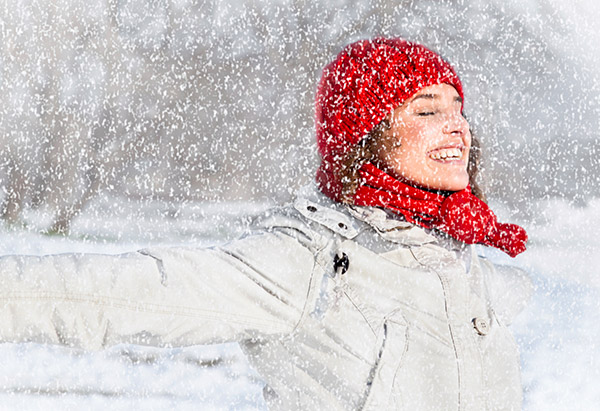6 Ways to Fool Yourself Into Thinking It's Warmer Than It Is
Instead of blasting the heat or wearing an extra sweater, feel toastier with one of these surprising (and scientific) strategies.

Photo: Thinkstock
Replay Your First Real Kiss
Or listen to the songs you loved when you were 18, driving your first car, the wind whipping through your hair. When asked to recall old times or to listen to nostalgic music, people reported feeling physically warmer than when they were asked to remember ordinary things, found a study published in the journal Emotion. As proof, they could immerse their hands in ice water longer and thought a cold room was a higher temperature than it really was. Psychological warmth activates the same circuits in the brain associated with physical warmth, the theory goes...which effectively convert memories' golden glow into (the perception of) heat.Take a Vase Breath
First-time students who took a mere half-hour lesson in g-Tummo, a Tibetan "inner heat" meditation, increased their body temps in just 10 minutes...without moving. Learning the "vase breath"—a technique that involves contracting the abdominal and pelvic muscles while holding hot air in the belly—allowed the students to raise their core body temperature to a sweaty 38.3°C (~101°F), reported researchers at the National University of Singapore. When experienced Tibetan nuns practice g-Tummo, they combine vase breath with a visualization exercise (imagining a fire along their spinal column) and can sustain fever-zone temperatures long enough to dry out damp cloths in below-zero conditions. G-Tummo's potential benefits go far beyond warming up, the study reports; the meditation technique may also improve alertness, memory, reaction time and immunity.Feed Your Inner Furnace
The more work it takes to digest something, the more heat your body produces, says Robert Kenefick, PhD, a research physiologist at the Thermal and Mountain Medicine Division of the US Army Research Institute of Environmental Medicine. One mountaineer's trick, he says, is to add slow-to-digest butter: "Hot chocolate with half a stick of butter in it tastes good, generates heat and warms you up when you are freezing in a tent on the side of a mountain." But Kenefick only recommends rich, caloric stuff for when we're outside for long periods of time shivering—not walking from our car to the mall. (Plus, buttery cocoa somehow doesn't taste as great at home.) For tamer situations, he suggests the standard cold-weather fare: hot drinks and soup, which activate thermal (heat-sensing) receptors along the digestive tract. This gives rise to a warming sensation, even if your body temperature doesn't actually increase.Just Add Water
There's a humble, low-tech device for those who can't get out of a warm bed on a nippy morning but are too eco-conscious to crank up the heat: The humidifier (especially the warm-mist type). While it doesn't actually increase the temperature of indoor air, you'll think it does, because humidity slows down the evaporation of perspiration on the skin, which normally has a cooling effect. (It's the reason why 85 degrees feels much cooler in the dry Arizona desert versus the balmy, sweltering tropics). Set the humidity level at 30 to 40 percent: High enough to hydrate the air, low enough not to inspire mold. Bonus: Humidity also deactivates flu viruses and moistens the nasal passages, reducing the risk of respiratory infections.Watch the Newest Rachel McAdams flick.
If you find yourself watching a lot of rom-coms this winter, there may be more at work than your love of happy endings. Your subconscious may just be regulating your body temperature for you. Tuning in to warm, loving personality traits in others enhances feelings of physical warmth—that's the upshot of a study published in the journal Social Psychology. Subjects felt warmer after hearing stories about caring, loyal, kind, sensitive souls than after hearing similar stories in which the characters were competent, efficient or creative. "Warmer hearts, warmer rooms," the researchers conclude, adding to the mounting evidence that the brain responds to social warmth with an actual rise in temperature.Wait Two Years....
At MIT, there's a cool, futuristic bracelet-like gadget under development. It's called Wristify, and the idea behind it is that it'll manipulate our perception of how warm or cold a room feels. How? By sending hot or cold pulses to a patch of skin on the wrist dozens of times per minute, which—amazingly—the device can trick the mind into thinking the temperature is several degrees higher (or lower) than it really is. This, the developers claim, should solve disputes between people who think a space feels like a meat locker versus those who insist it's overheated.More on Staying Healthy During the Winter



